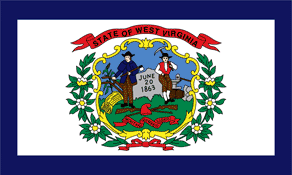West Virginia State Standards for Language Arts: Kindergarten

Currently Perma-Bound only has suggested titles for grades K-8 in the Science and Social Studies areas. We are working on expanding this.
WV.RLA.S.K.1. Reading: Students will apply reading skills and strategies to inform, to perform a task and to read for literacy experience by identifying and using grade appropriate essential reading components (phonemic awareness, phonics, vocabulary, fluency,comprehension, and written application) and selecting a wide variety of literature and diverse media to develop independence as readers.
RLA.O.K.1.1. Segment words into phonemes (cat = /c/ /a/ /t/)
RLA.O.K.1.2. Blend phonemes into words (/p/ /l/ /a/ = play).
RLA.O.K.1.3. Manipulate onset and rime (word families).
RLA.O.K.1.4. Use basic elements of phonetic analysis (e.g., common letter/sound relationships, beginning/ending consonant sounds, short vowel sounds, word patterns).
RLA.O.K.1.5. Name all lower/upper case letters in random order.
RLA.O.K.1.6. Read level-appropriate sight words and read decodable c-v-c words.
RLA.O.K.1.7. Use new vocabulary in speaking.
RLA.O.K.1.8. Recognize that print conveys meaning.
RLA.O.K.1.9. Establish a purpose for reading (e.g., for information, for pleasure).
RLA.O.K.1.10. Use concepts of print:
RLA.O.K.1.10.a. Front of book
RLA.O.K.1.10.b. Title
RLA.O.K.1.10.c. Hold book correctly
RLA.O.K.1.10.d. Follow words from left to right and top to bottom of page
RLA.O.K.1.10.e. Spaces
RLA.O.K.1.10.f. Turn pages left to right
RLA.O.K.1.10.g. One-to-one match of print and voice
RLA.O.K.1.10.h Difference between words and letters
RLA.O.K.1.11. Use basic comprehension concepts in a variety of texts (e.g., author/illustrator, main idea, setting, characters, sequence, retelling, predicting).
RLA.O.K.1.12. Make connections between literary work and people in own life and other cultures (e.g., characters, events).
RLA.O.K.1.13. Use reading skills and strategies to understand a variety of informational resources to support literacy learning (e.g., environmental print, signs, labels, electronic resources).
RLA.O.K.1.14. Develop independent reading to build background knowledge, expand vocabulary and comprehend literary and informational text.
WV.RLA.S.K.2. Writing: Students will apply writing skills and strategies to communicate effectively for different purposes by using the writing process applying grammatical and mechanical properties in writing and selecting and evaluating information for research purposes.
RLA.O.K.2.1. Develop proper manuscript techniques in print: correct directionality
RLA.O.K.2.1.a. Proper writing positions
RLA.O.K.2.1.b. Print upper/lower case letters and numerals
RLA.O.K.2.1.c. First and/or last name
RLA.O.K.2.1.d. Uniformity
RLA.O.K.2.2. Use writing and other methods for self-expression (e.g., drawing pictures, using letters or phonetically spelled words, telling, dictating, making lists).
RLA.O.K.2.3. Begin to compose written works using appropriate parts of the writing process (e.g., initial attention to planning and drafting class publishing).
RLA.O.K.2.4. Use conventions of spelling in written relationships (e.g., use letter/sound relationships to spell independently, spell some high frequency words appropriate to grade level).
RLA.O.K.2.5. Use conventions of capitalization in written composition (e.g., first and last name, first word of sentence, I).
RLA.O.K.2.6. Identify and use conventions of punctuation in written composition (e.g., period, question mark).
RLA.O.K.2.7. Use a variety of sources to gather information in sharing thoughts and ideas (e.g., pictures, charts and graphs, electronic resources).
WV.RLA.S.K.3. Listening, Speaking and Media Literacy: Students will apply listening, speaking and media literacy skills and strategies to communicate with a variety of audiences and for different purposes.
RLA.O.K.3.1. Listen, recite and respond to familiar stories, poems, nursery rhymes, songs and stories with repeated patterns.
RLA.O.K.3.2. Recognize a variety of visual media and its intended purpose.
RLA.O.K.3.3. Understand the main idea or message in visual media (e.g., pictures, cartoons, weather reports, newspaper photos, visual narratives).